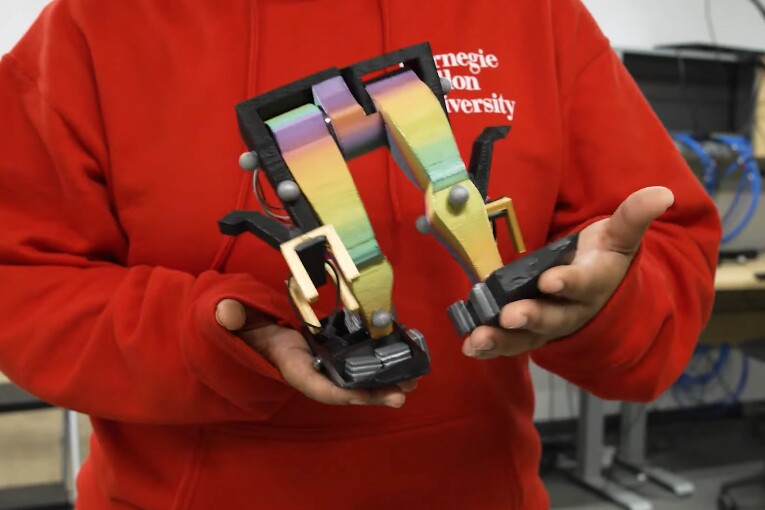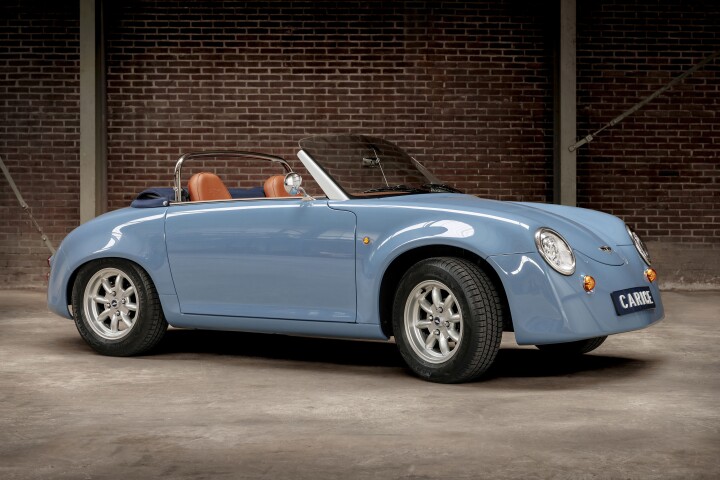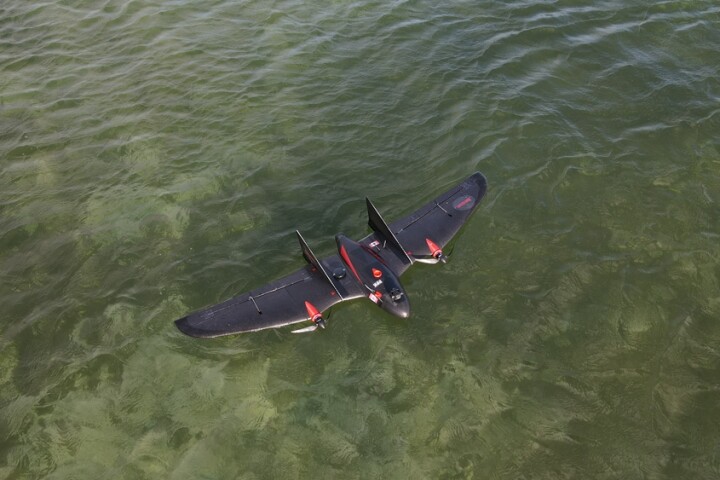
Created by a team of scientists at Carnegie Mellon University, Mugatu utilizes a walking mechanism which consists of just two rigid legs that are both moved by a single shared motor. And while the robot currently stands 18.5 cm high (7.3 in), plans call for the technology to ultimately be incorporated into bipedal robots that are the size of a Lego Minifigure (about 4 cm/1.6 in tall).
Mugatu was actually inspired by a different type of toy, known as the Wilson Walkie. These unpowered wooden figures from the 1930s have swinging legs with large feet on the bottom. When one of the figures is placed at the top of a ramp, the force of gravity causes the toy to walk down to the bottom by shuffling its legs back and forth.
In the case of Mugatu – which can’t always be walking down ramps – gravity is replaced by an oscillating hip motor.

The robot begins by standing still, with both legs side-by-side. Its motor then swings its left leg forward. As this happens, the bot’s center of gravity shifts toward that leg, causing the robot to pitch forward and roll onto its left foot.
By doing so, Mugatu creates enough clearance for its right leg to then swing forward and past the left, which it does. The robot thus then pitches forward and rolls onto its right foot, after which the process is repeated over and over again.
Turning to the left or right is managed by simply swinging one leg faster or over a longer distance than the other. This capability sets Mugatu apart from other small experimental bipedal robots – or even toy robots, for that matter – that can only walk straight ahead.
The scientists, led by professors Aaron Johnson and Sarah Bergbreiter, are now working on scaling the system down. They hope it may one day be utilized in tiny walking robots that could perform tasks such as searching for survivors trapped under disaster site rubble, or inspecting the insides of machines.
You can see Mugatu in action, in the video below.
Source: Carnegie Mellon University



















